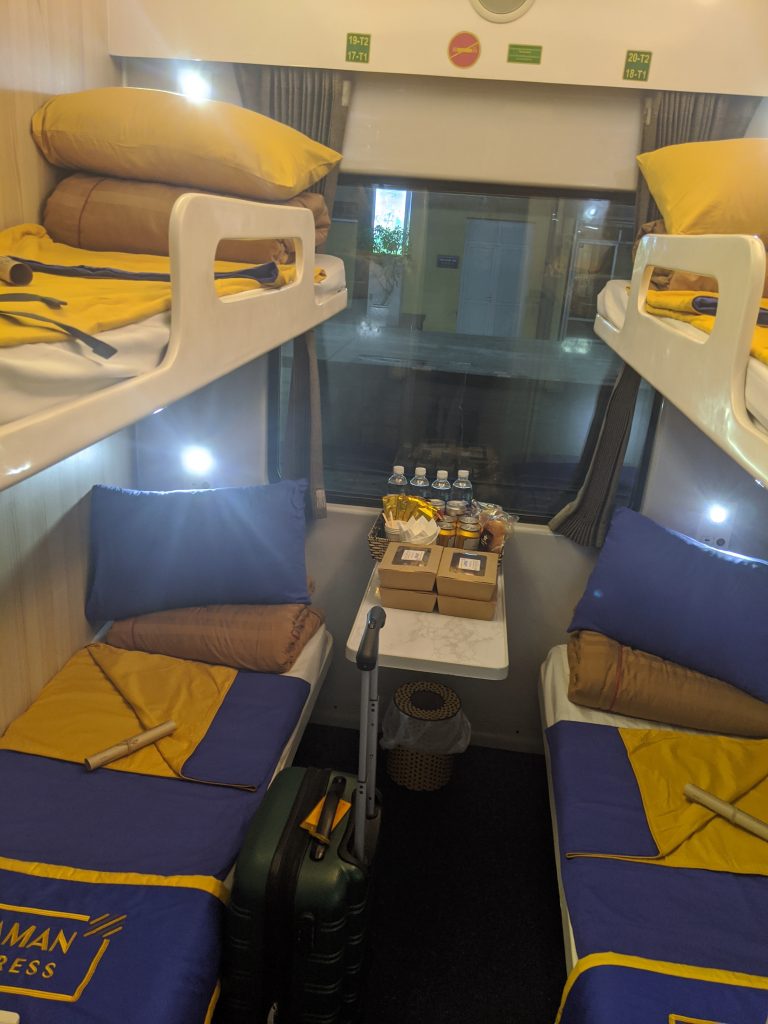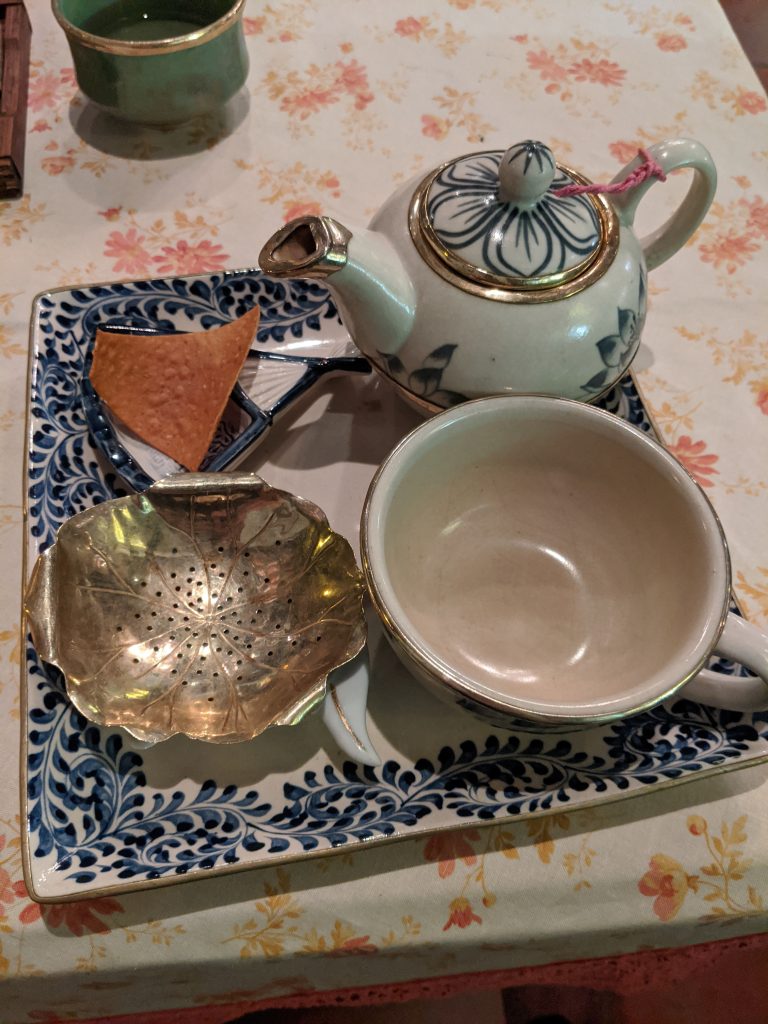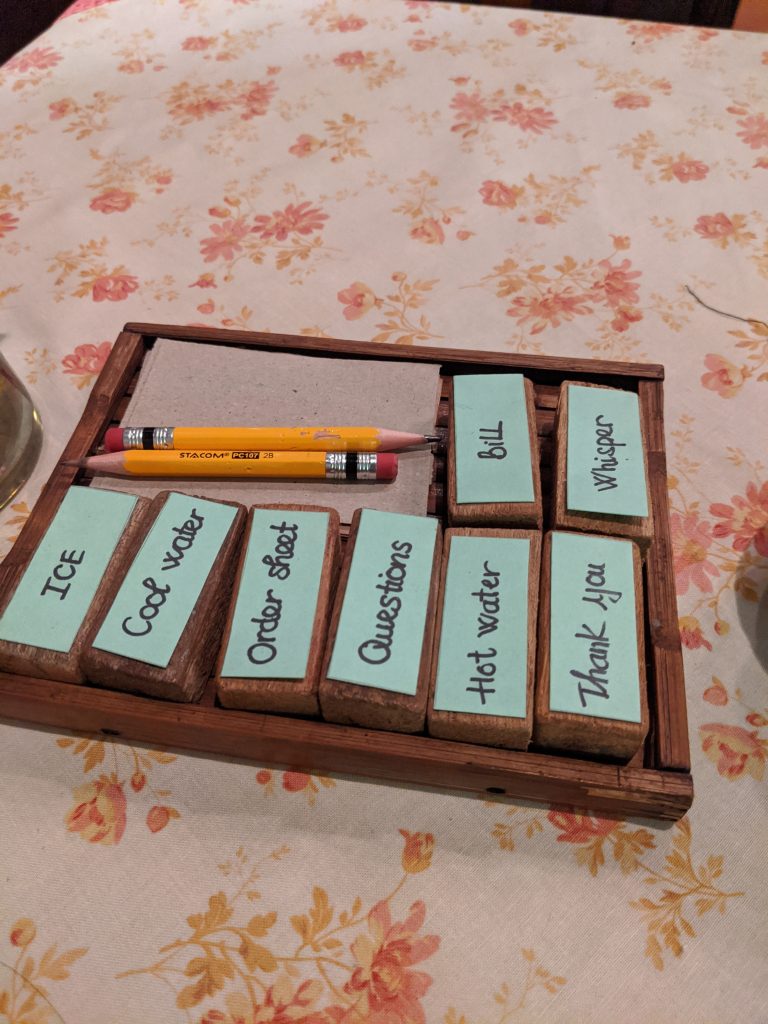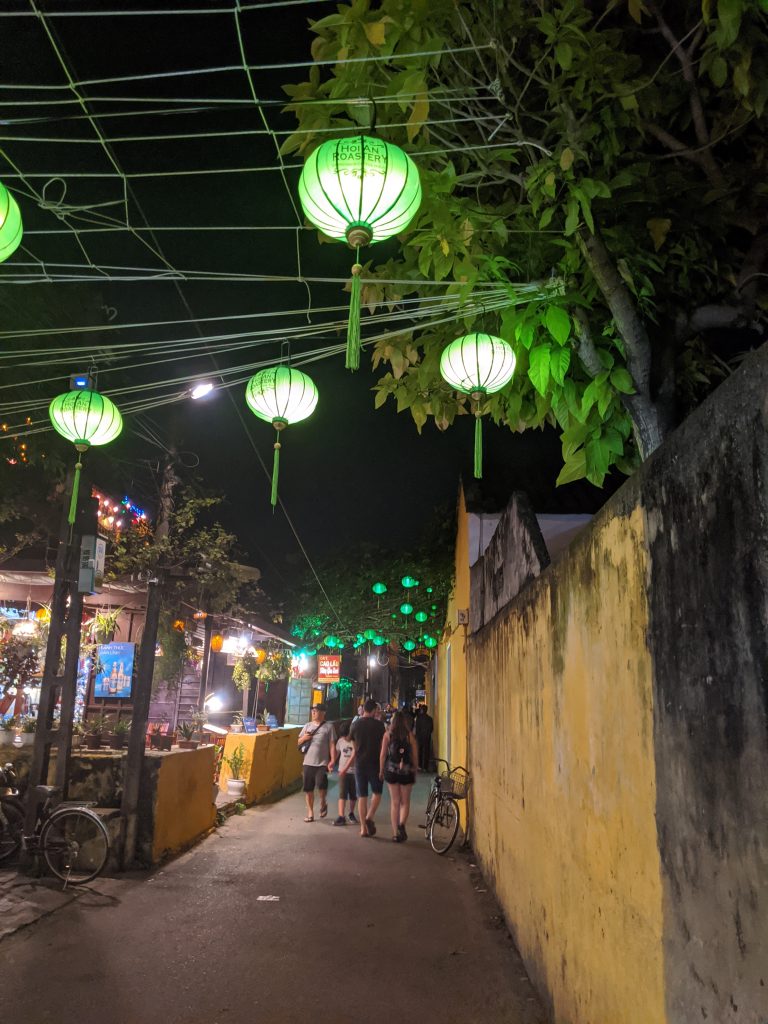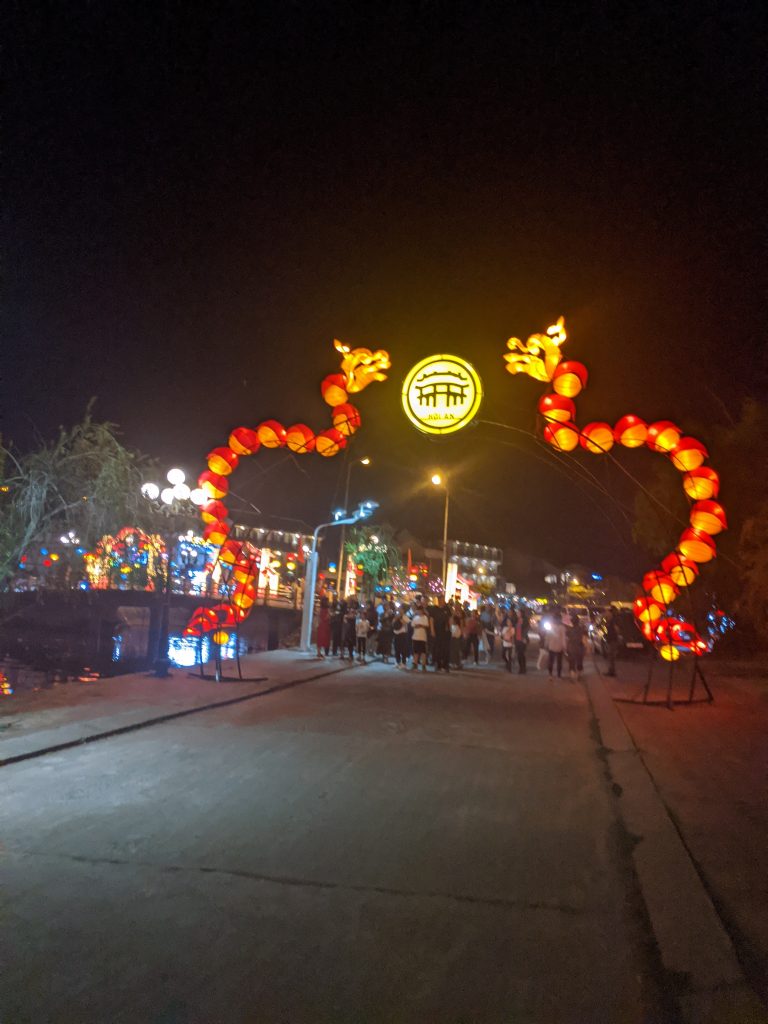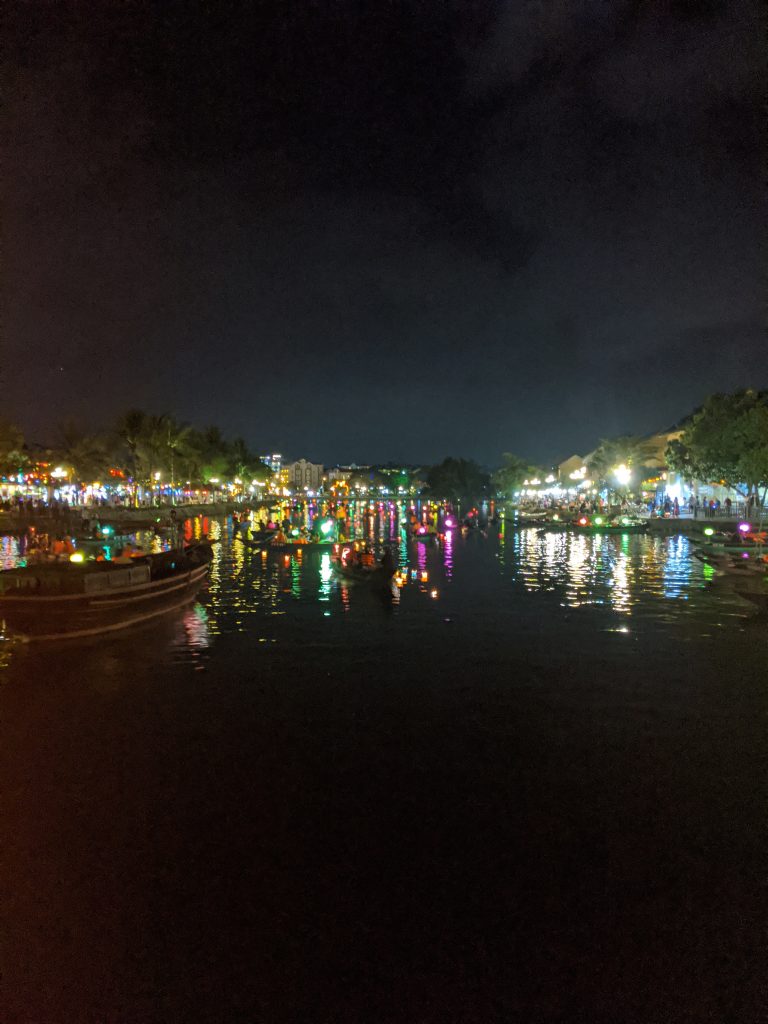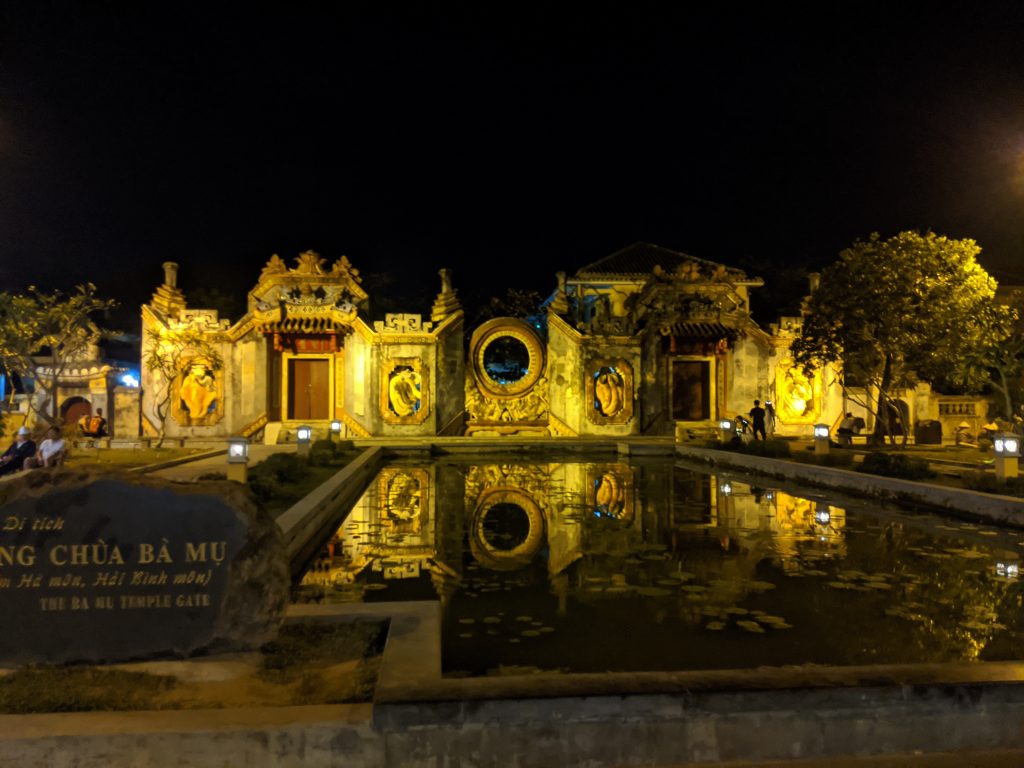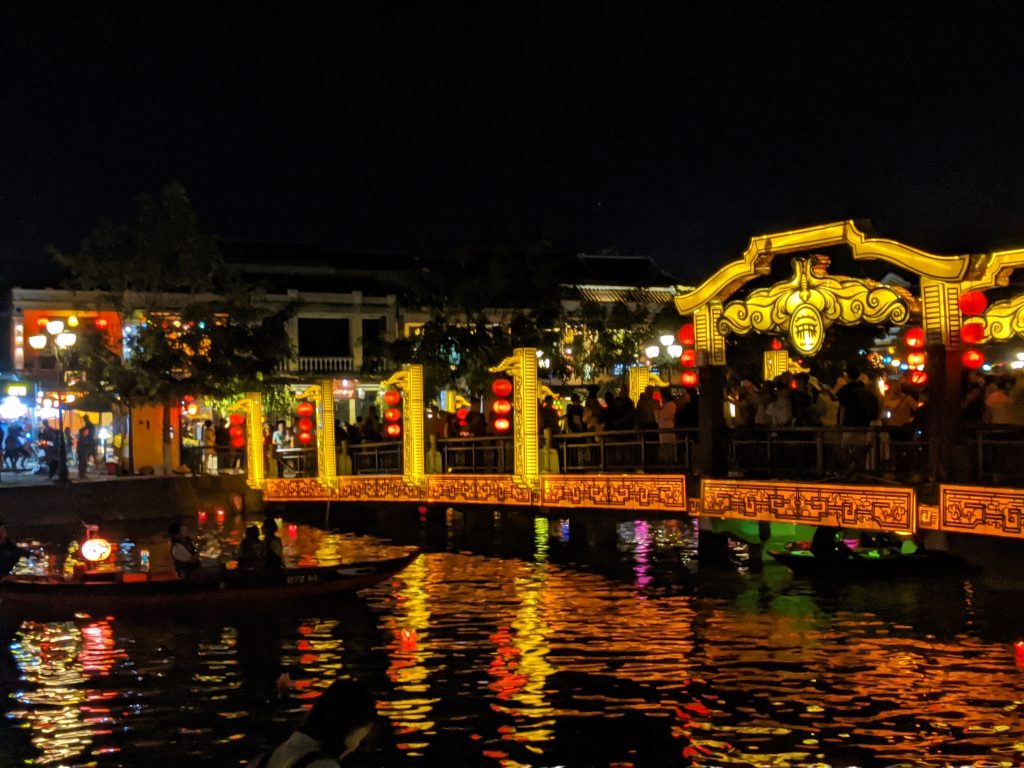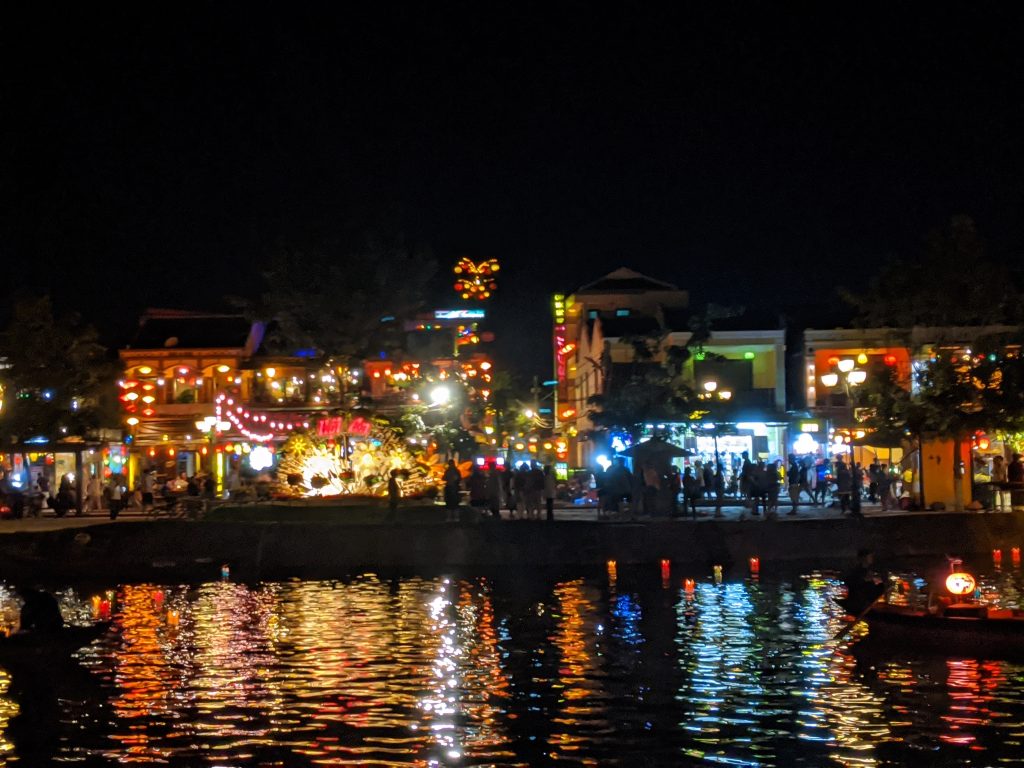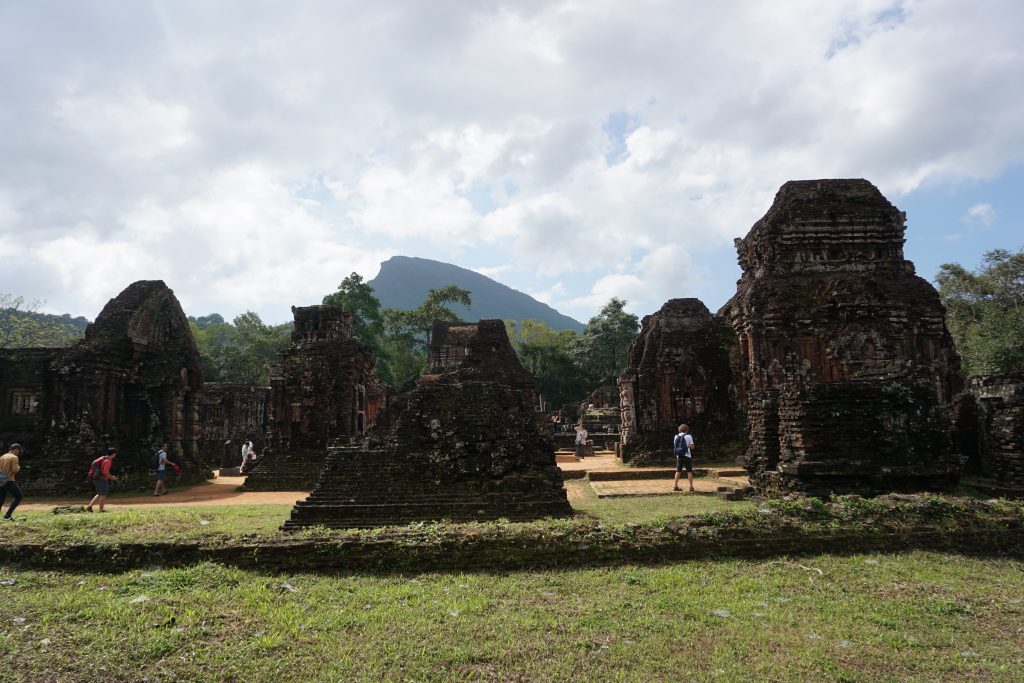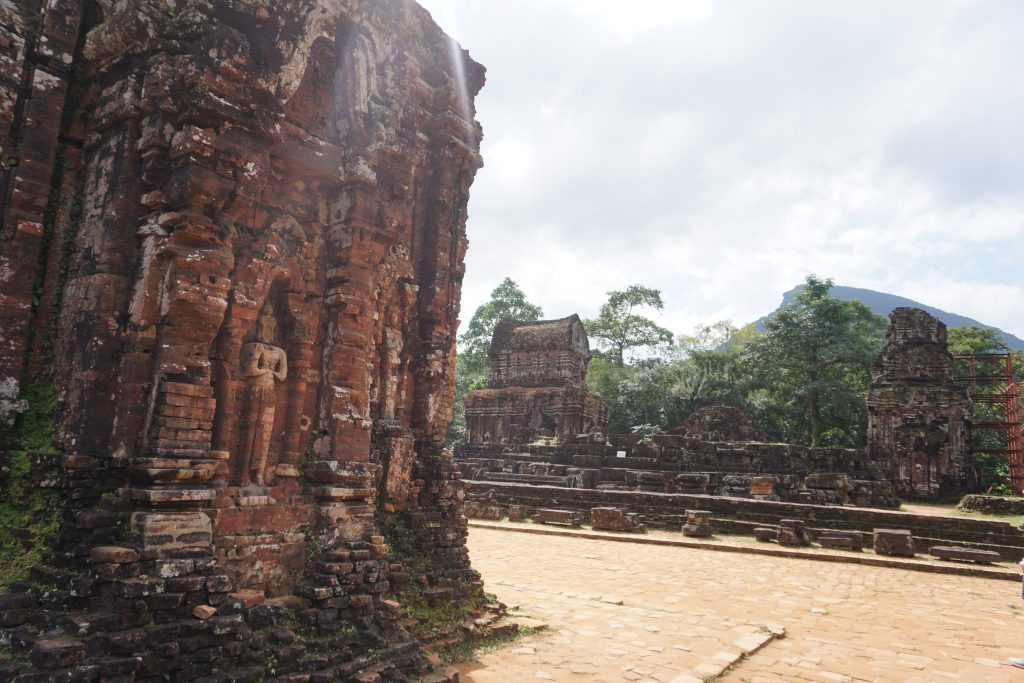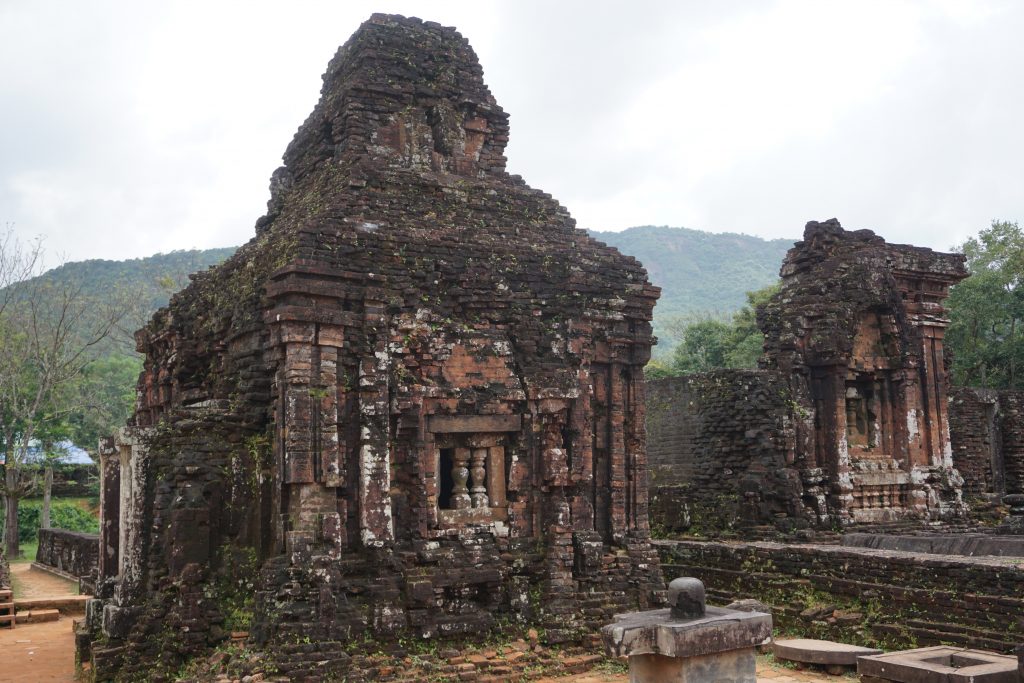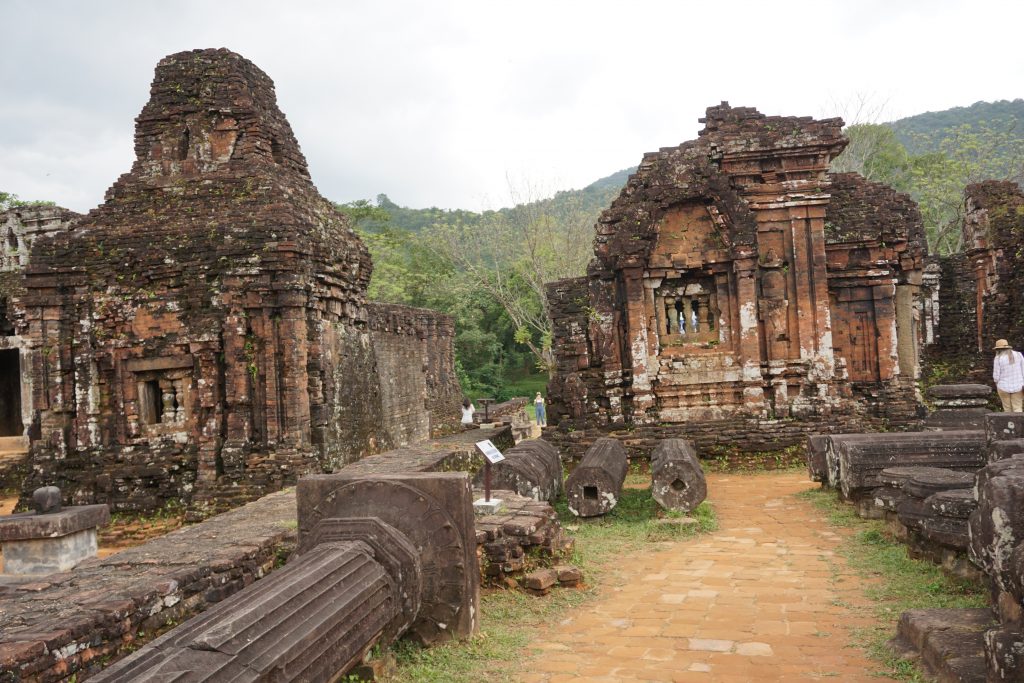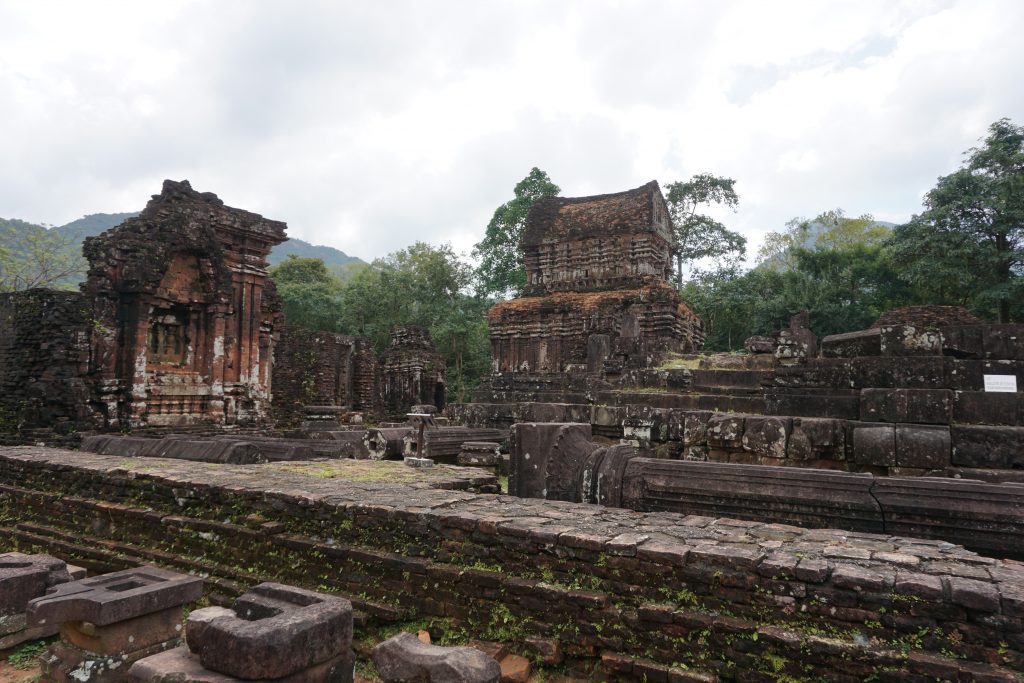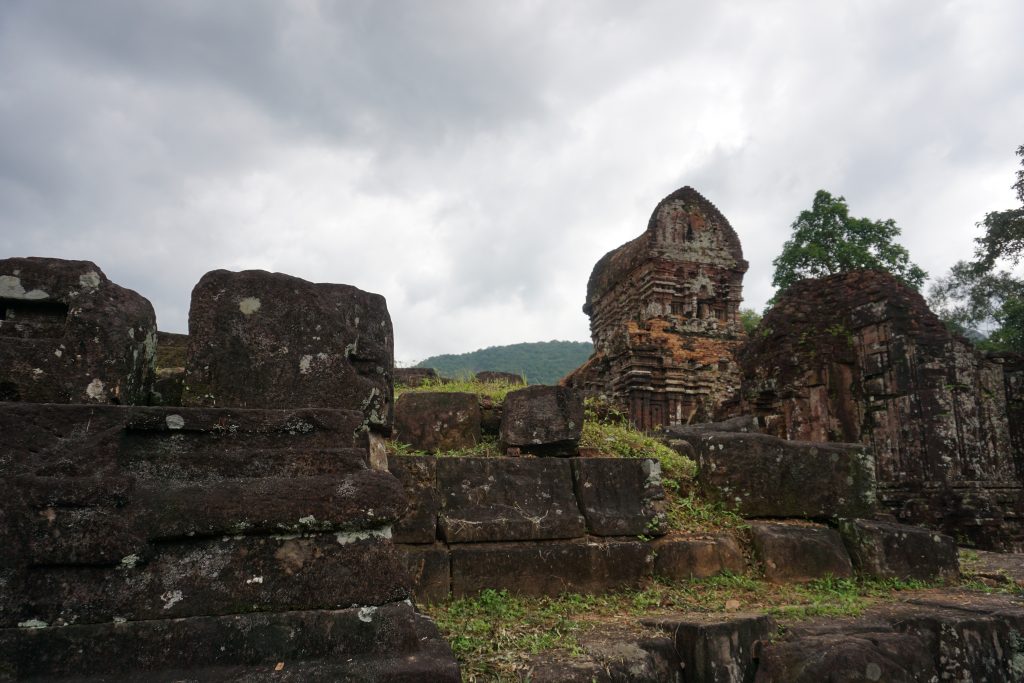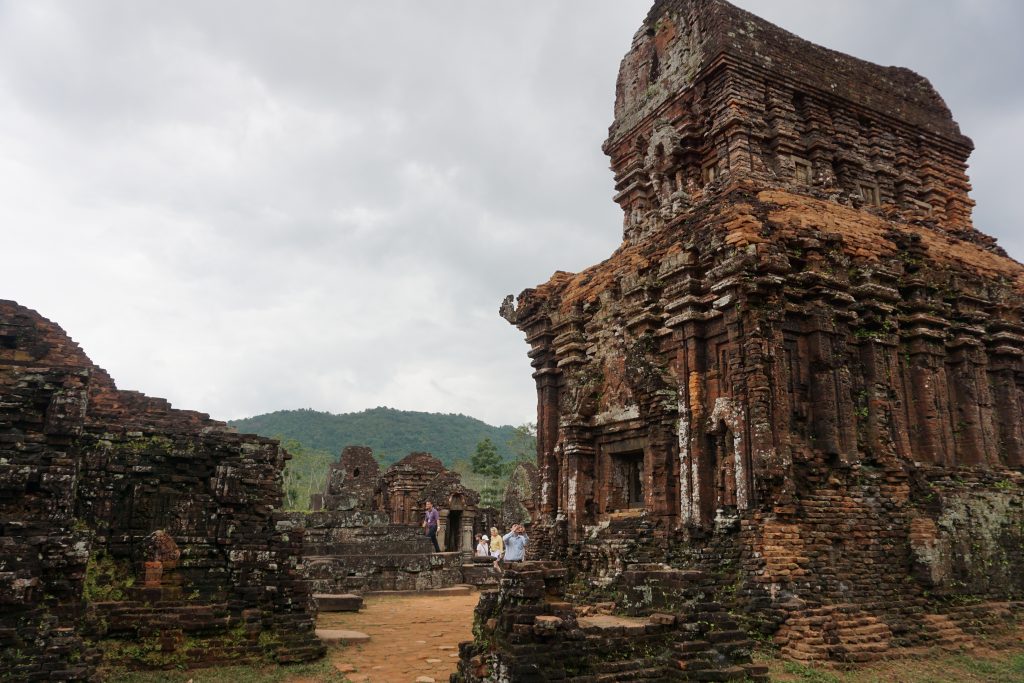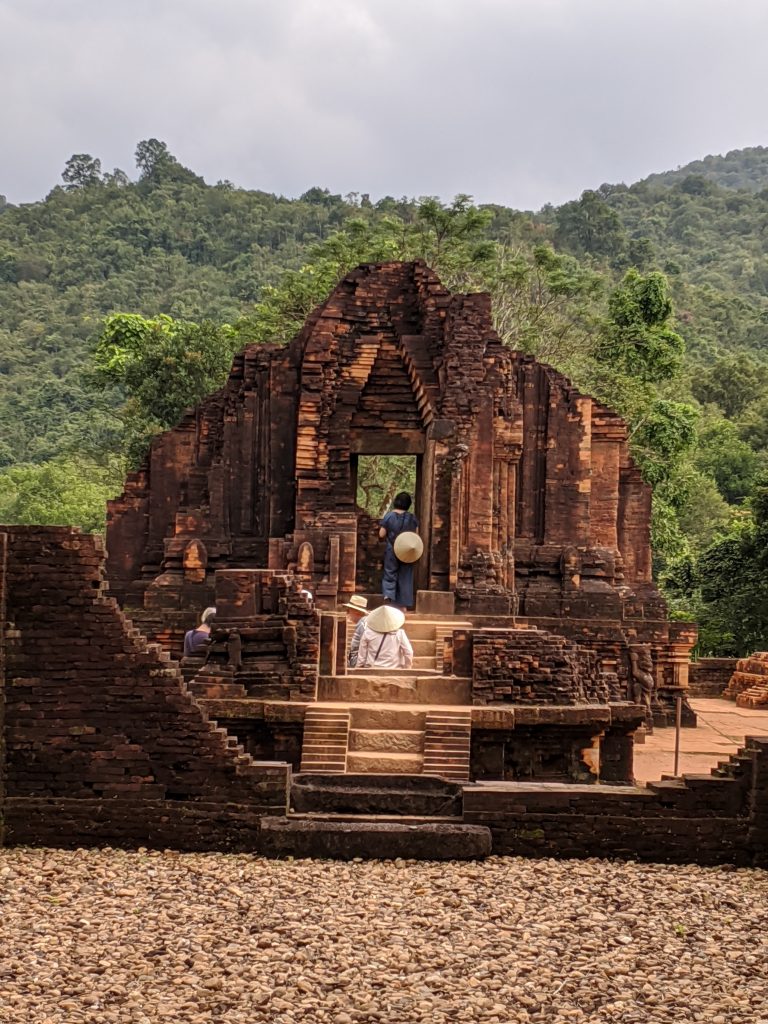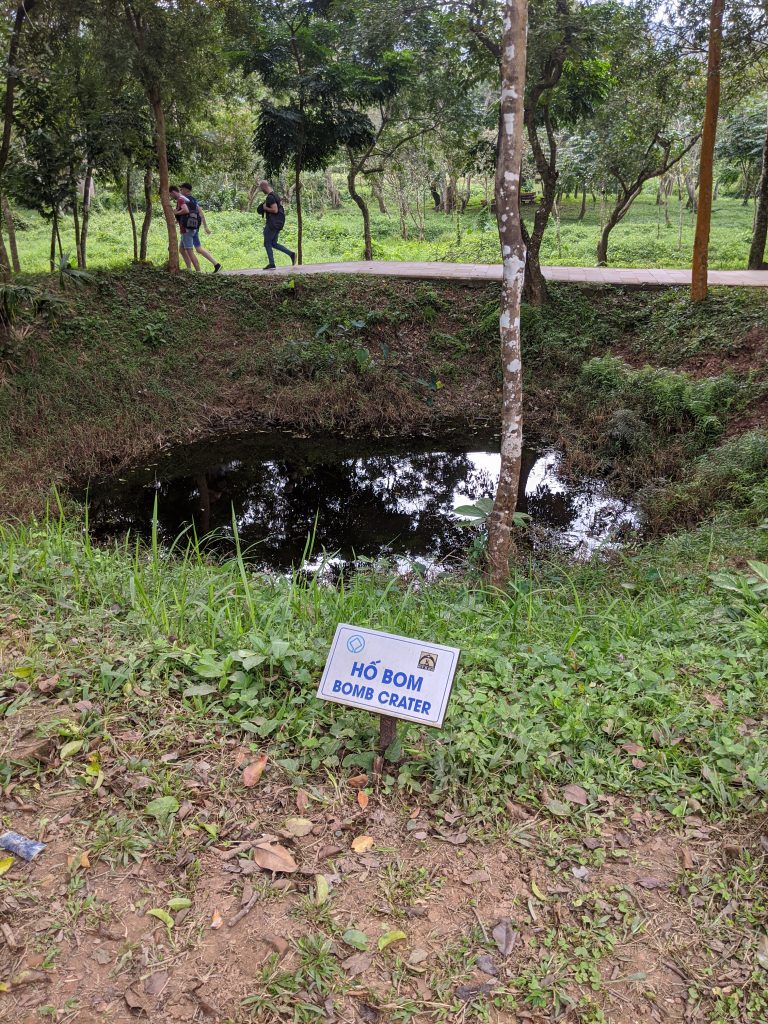I took the overnight train from Hanoi to the town of Hoi An in central Vietnam. The train was surprisingly cozy considering there are four bunks to a room. I started with the carriage to myself, departing around eight at night. The train made multiple stops throughout the night, picking up three additional passengers in my carriage that I’d be staying with until arriving the following day. There wasn’t much food on board, but each carriage was fitted with cans of Coke, bottles of water, and a croissant and banana for breakfast.
I awoke to a beautiful landscape as the train made its way along the cliffs, past the ocean, and through the jungle. We were about three hours behind schedule (I’d come to learn all departure and arrival times are more guidelines than rules in my time traveling throughout Southeast Asia), but I didn’t mind as it meant I had more time to gaze out the train window.
During the day, Hoi An is a quiet, historic town and former trading port, known for its ancient buildings, French and Chinese influenced architecture, Japanese covered bridges, and canals that cut through the city. It isn’t plagued with the congestion, pollution, or traffic of other cities I would visit in Vietnam, and I can’t stress enough how friendly and welcoming the people of the town were.
Hoi An is a walker/biker’s dream, full of small restaurants, boutique shops, custom tailors, and a wide array of coffee and tea shops. My personal favorite was Reaching Out Tea House, a completely silent tea house staffed by locals who are speech or hearing impaired. There are blocks with words and paper/pencils placed on each table so that you can wordlessly place your order with the server. The tea house has a beautiful environment and peaceful atmosphere, supports a great cause, and has a quality variety of tea to choose from. It was my favorite café in Vietnam.
At night, Hoi An really comes to life, turning into a lantern wonderland. On my first night, I didn’t know anything about the city, so I headed out to explore, past the ancient temple near my lodgings now lit up at night and towards the downtown area to explore. The streets were lit up by Chinese lanterns, giving the town a whimsical feeling. I walked through a dark alley towards a glowing green light, which turned out to be green lanterns at the end of the alley lighting the way. I turned the corner and found myself on the river surrounded by shops, restaurants, food stands, and bars. The entire area was lit up by lanterns and string lights, with old women sitting along the river selling candle lanterns to release into the water. Boats take you on a moonlit stroll down the river while fire dancers, musicians, street performers, and local circus performers vie for your attention.
I crossed the covered bridge to explore the night market, full of some of my favorite street food Vietnam had to offer. Bahn Mi is the most popular local dish, a Vietnamese/French fusion baguette filled with meats and veggies. Cao Lau is the staple noodle dish, featuring noodles soaked in lye with meats and vegetables piled on top. White rose dumplings are also common throughout the town—white rice paper stuffed with shrimp and folded to give it the look of a flower.
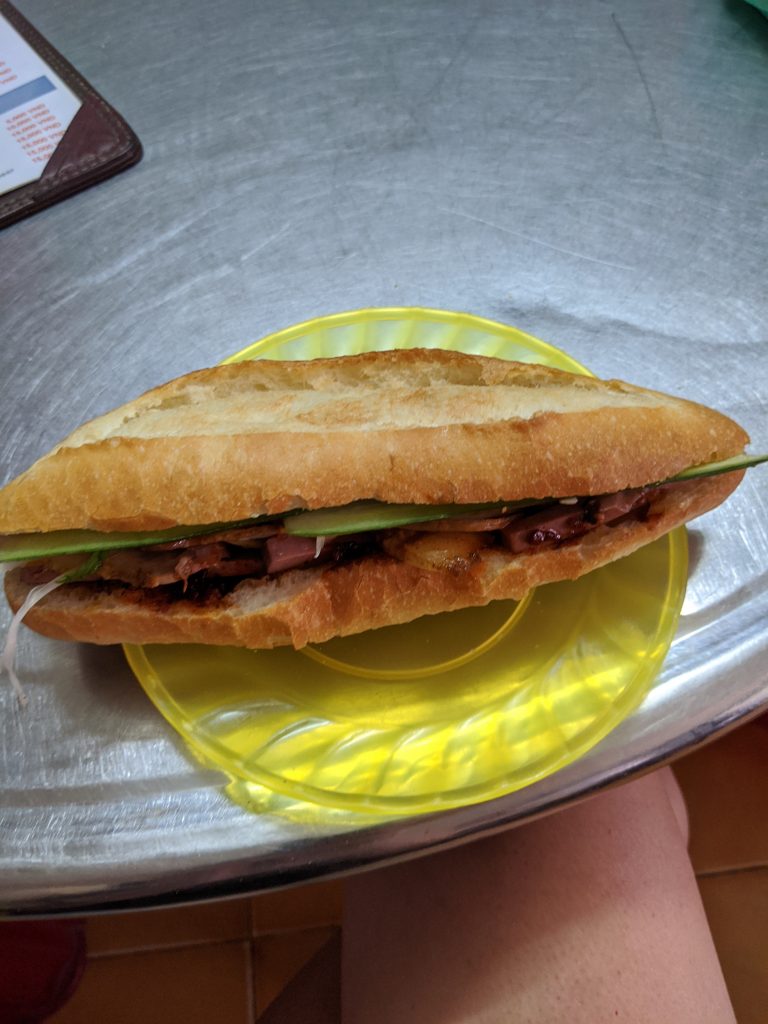
Banh Mi 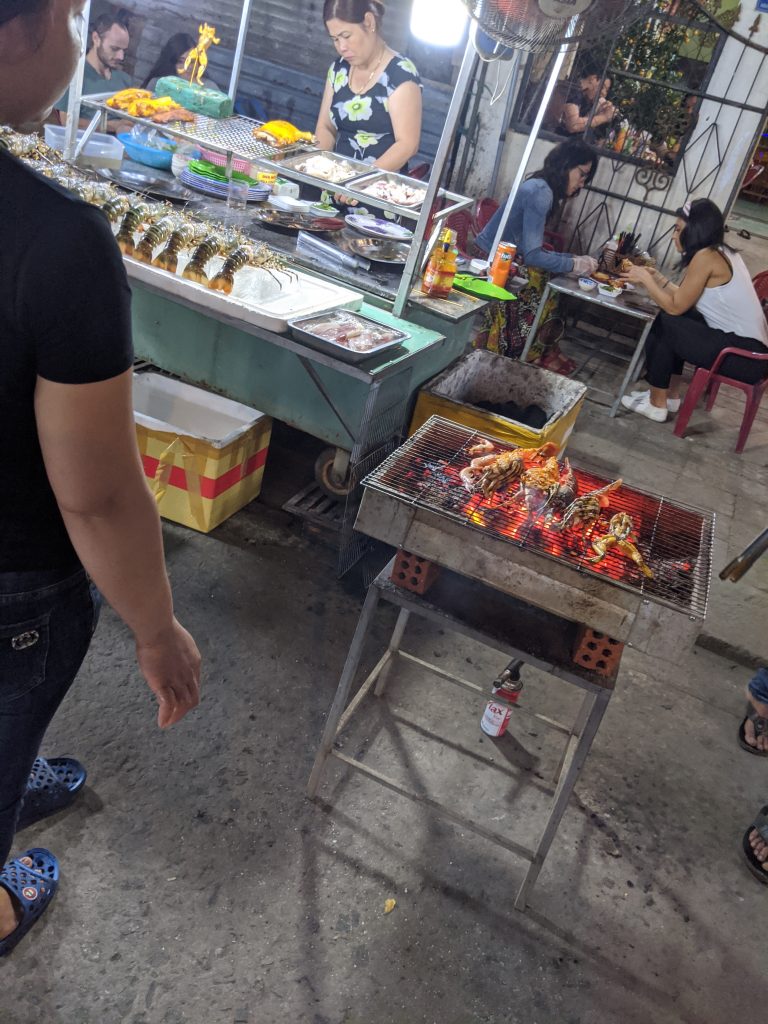
Night Market 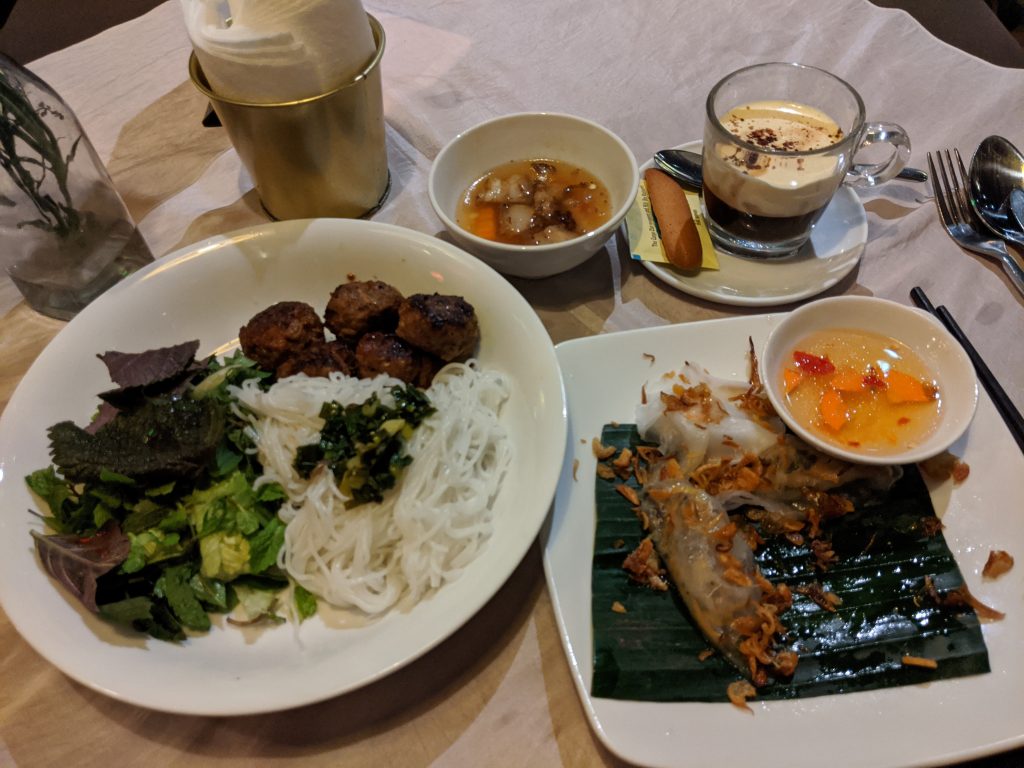
Left: Bun Cha; Right: White Rose Dumplings; Top: Ca Phe Trung (egg coffee)
I ate an absurd amount of food in Hoi An, as everything I had was equal parts delicious and cheap. I spent three days in the town and wish I had spent several more. Hanoi and Ho Chi Minh City each had their own charms, but Hoi An was a relaxing breath of fresh air and one of my favorite towns on my trip.
A trip to Hoi An wouldn’t be complete without a stop at the My Son Ruins, a group of over seventy ancient Hindu temples dating back to the fourth century. The ruins are quite sobering to see as many of the temples were destroyed in the Vietnam War. Bomb craters still litter the area and much of the site is unsafe to explore due to undetonated bombs and mines.
Trimurti is the supreme divinity of Hinduism, and much like Christianity, Trimurti is personified as three deities: Brahma the Creator, Vishnu the Preserver, and Shiva the Destroyer. There is a dark joke about the My Son Ruins that the Champa (the kingdom of Cham people who built the temples) are the Creator, UNESCO is the Preserver, and the US Air Force is the Destroyer.
Long before the Vietnam War, the French were the first to desecrate My Son during their colonization. In an effort to spread Christianity, the French colonizers removed the heads of the statues throughout My Son. To the dismay of many Vietnamese, the heads have never been returned and currently sit on display in the Louvre.
The My Son Ruins are a beautiful, sobering, and important part of Vietnamese history. I’d be in for more grave sights once I arrived at my next stop: Ho Chi Minh City.
